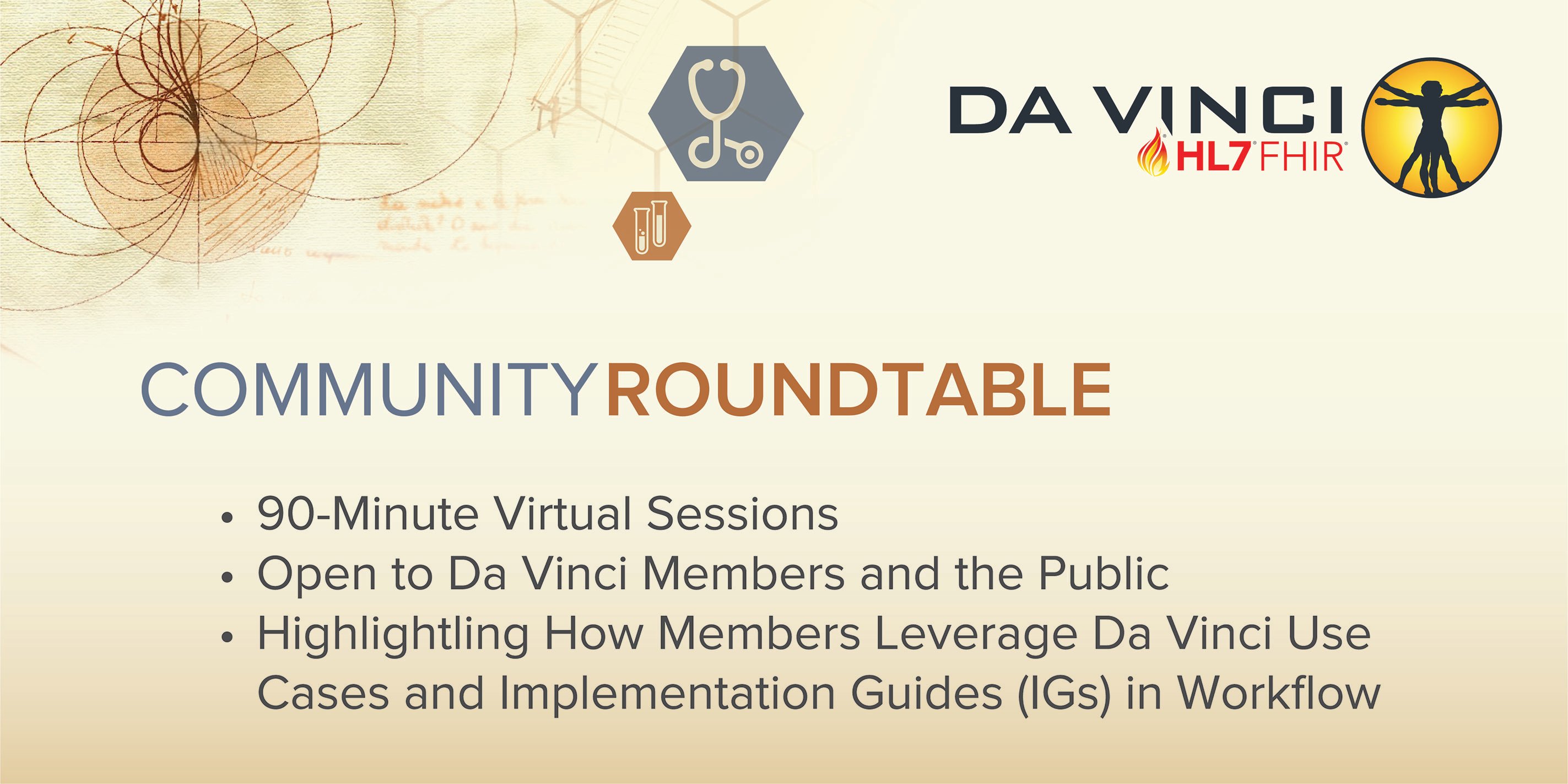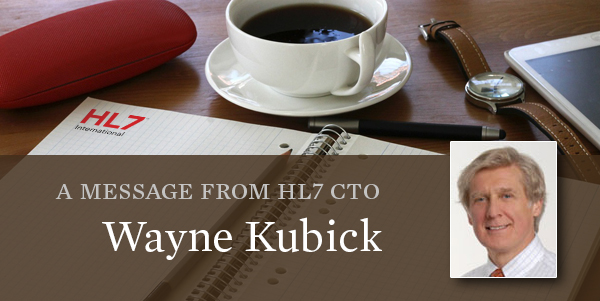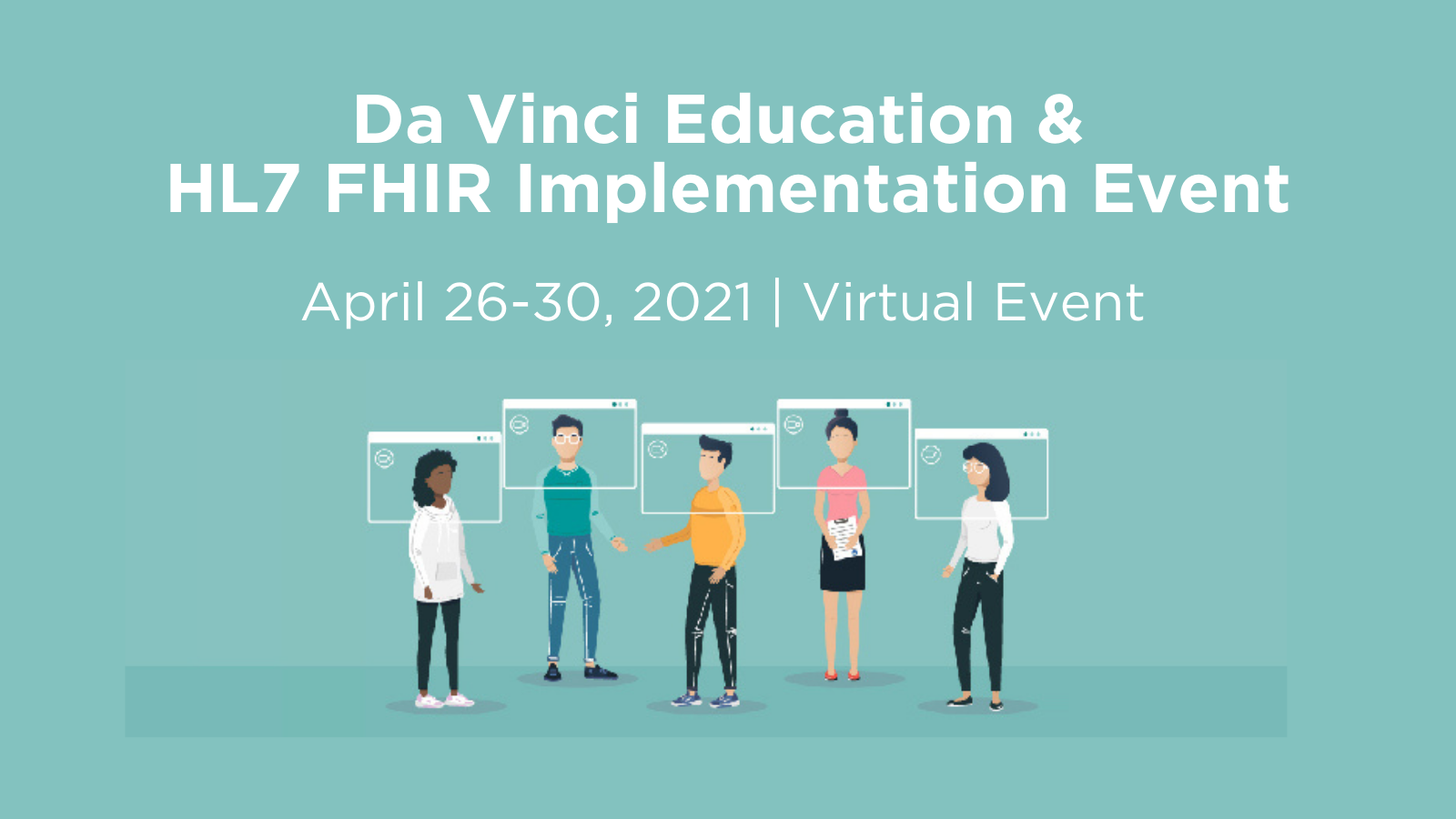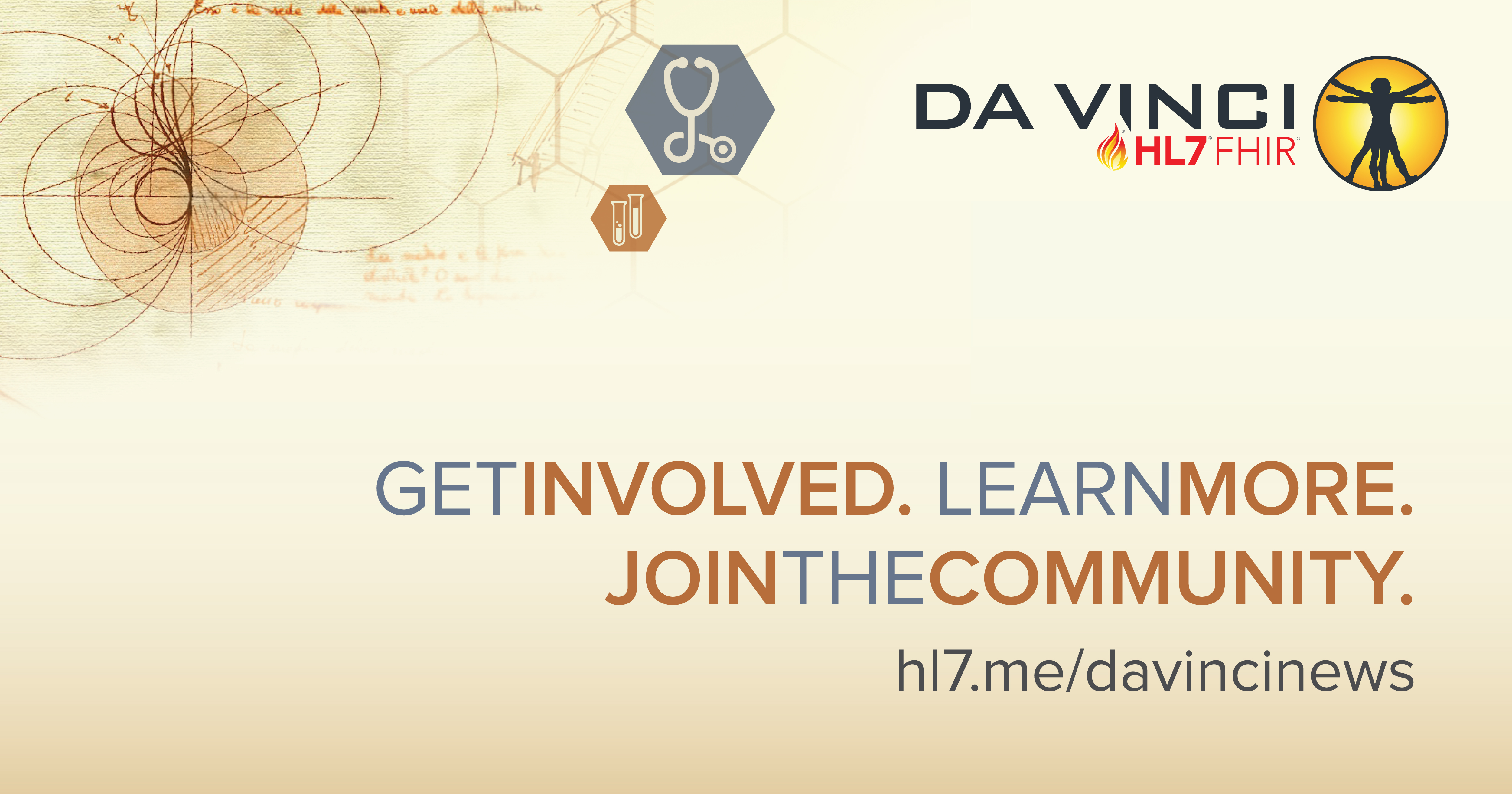In July 2021, the Centers for Medicare & Medicaid Services (CMS) hosted its second HL7® FHIR® Connectathon, welcoming over 800 participants from Federal agencies, payer organizations, and the health IT industry to a three-day event with more than 70 presentations focusing on education, implementation guide testing, and community-building around Fast Healthcare Interoperability Resources (FHIR)-based application programming interfaces (APIs).
CMS HL7® FHIR® July Connectathon Recap
[fa icon="calendar'] Aug 27, 2021 2:06:36 PM / by Health Informatics and Interoperability Group posted in FHIR, HL7, HL7 community, health IT, CMS, FHIR Connectathon
HL7 Da Vinci Project Roundtable to Discuss Progress on Efforts to Use FHIR at Scale
[fa icon="calendar'] Aug 24, 2021 2:43:55 PM / by Fred Bazzoli posted in FHIR, Payers, Da Vinci, value based care, ONC, payer data exchange, FHIR Accelerator, PDex, ONC FAST
Recent Initiatives of the ONC’s FHIR at Scale Taskforce (FAST) and Update on Payer-to-Payer Mandate are Key Topics for Wednesday Event, 8/25 at 4:00 pm ET
The success of the HL7® Fast Healthcare Interoperability Resource (FHIR®) standard is becoming increasingly evident.
Successful case studies are emerging. For example, a recently published HL7 case study documents how MultiCare Connected Care and Regence are recognizing significant cost savings by using a FHIR implementation guide standard to definitively ascertain that medication reconciliation has been completed. This case study can be found at https://www.hl7.org/participate/case-studies/index.cfm .
But these isolated successes beg the question – can FHIR be used more broadly, and implemented more widely across the country, handling a multiplicity of interactions across dozens of healthcare organizations simultaneously?
That is the task given to the ONC’s FHIR at Scale Taskforce (FAST), which is seeking to determine solutions and opportunities to influence emerging solutions.
Progress by the ONC FAST effort is of prime importance to the dissemination of FHIR solutions to solve information exchange challenges in healthcare. The panel’s progress over the past year will be one of the topics of the Da Vinci Project’s monthly Community Roundtable event, to be held from 4 to 5:30 p.m. ET on Wednesday, August 25.
Payer-to-Payer Data Exchange Highlight of HL7 Da Vinci Community Roundtable
[fa icon="calendar'] Jul 23, 2021 9:22:40 AM / by Fred Bazzoli posted in FHIR, Payers, Da Vinci, value based care, payer data exchange, FHIR Accelerator, PDex
HL7 Da Vinci Roundtable on July 28 from 4:00 to 5:30 p.m. ET to Feature Payer-to-Payer Data Exchange
Join the Da Vinci Project next Wednesday at its July Community Roundtable titled "Payer-to-Payer Data Exchange: Rising to the Opportunities and the Challenges." The session will focus on the use of HL7's 's Fast Healthcare Interoperability Resources (FHIR®) for payer-to-payer data exchange, highlighting the Payer Data Exchange (PDex) use case.
Presenters for the session include:
- Michael Gould, business lead - interoperability at Blue Cross Blue Shield Association
- Patrick Murta, chief interoperability architect & solutions architecture fellow, Humana
- Heather Kennedy Tanner, director of enterprise architecture, BlueCross BlueShield of Tennessee
Clinical Data Exchange Gets Increased Attention to Meet Efficiency Goals, Regulatory Challenges
[fa icon="calendar'] Jun 22, 2021 4:28:39 PM / by Fred Bazzoli posted in FHIR, Da Vinci, value based care, FHIR Accelerator, CDX, burden reduction
Da Vinci Roundtable on June 23 from 4:00 to 5:30 p.m. ET to Look at the Potential for Getting More Value from the Use of Standards
Exchanging clinical data sets is getting more attention, particularly as healthcare organizations focus efforts on gaining efficiency and improving clinical care, while reducing clinician burden.
The ultimate challenge is freeing the data contained in these communications and making it computable and usable with minimal or no manual intervention. That looks ahead to the incorporation of fielded data, which will enable the use of agreed-upon approaches to make data usable.
Sharing the current state of the art for these advances through the use of Fast Healthcare Interoperability Resources (FHIR®) will be the focus of the June Community Roundtable of the Da Vinci Project, taking a deep dive into the Clinical Data Exchange (CDX) use case.
The session, with the title of “Demystifying Attachments to Enable Clinical Data Exchange,” will take place from 4 to 5:30 p.m. ET on June 23. The roundtable will focus specifically on the importance of implementing clinical data exchange capabilities, to anticipate emerging data exchange requirements and potential regulatory efforts.
Steven Lane, MD, MPH, clinical informatics director for privacy, information security and interoperability at Sutter Health, will share the clinician view regarding the challenges, opportunities and benefits of standardized data exchange.
In addition, Mary Lynn Bushman, agile product managers for National Government Services, will showcase their attachments implementation and production successes that it’s experienced with more than 1,500 provider organizations, improving multiple workflows and reducing burden. Da Vinci’s Technical Director Viet Nguyen, MD, will discuss emerging capabilities for provider-provider and provider-payer clinical data exchange.
U.S. Federal Health Data Solutions in the Era of Interoperability
[fa icon="calendar'] May 25, 2021 4:30:17 PM / by Will Rosenfeld posted in FHIR, HL7, HL7 community, interoperability, SMART on FHIR, Clinical Quality Language, COVID-19, public health, CQL
Federal health agencies have entered an era where data interoperability-enabled solutions play a critical role. Government leaders can harness the innovative and proven capabilities referenced in this article to deliver on their essential missions.
Background
In 2020, two major events laid the foundation for this era of interoperability.
Pandemic Response: The first was the coronavirus pandemic, which led to unprecedented needs for health data in support of agency missions. Since its start, decision-makers have required more access to and insights from these data (e.g., clinical records, administrative claims, patient experience) than ever before.
Interoperability Rules: The second was the finalization of the ONC and CMS-led 21st Century Cures Act interoperability rules. These mandates substantially expanded agencies’ ability to leverage health data solutions (e.g., algorithms, applications, and automation) at scale.
May Community Roundtable Covers Reducing Burden: Da Vinci Quality Measures Tied to CMS RFI and HIPAA Exception Request for Prior Authorization
[fa icon="calendar'] May 21, 2021 10:31:37 AM / by Fred Bazzoli posted in FHIR, Da Vinci, value based care, DEQM, prior authorization, FHIR Accelerator, quality measures
Monthly Event is Scheduled for 4:00 to 5:30 p.m. ET on Wednesday, May 26, 2021
The Da Vinci Project is offering real-life examples of how healthcare organizations are using its Use Cases to make a difference in information exchange and interoperability.
The community roundtable will feature a session entitled, “Reducing Burden: Da Vinci Quality Measures tied to CMS RFI and HIPAA Exception Request for Prior Authorization.” The Da Vinci PMO will provide an update including the latest federal proposed rule Request for Information related to digital quality measurement collection using HL7's Fast Healthcare Interoperability Resources (FHIR®). Learn about Da Vinci’s DEQM and Gaps in Care Implementation Guides to assist you during your review and with crafting your RFI response. Da Vinci leadership will discuss current prior authorization burden and how the available implementation guides can streamline the processes. In addition, the PMO will discuss opportunities provided by the newly granted exception to the HIPAA requirement for Da Vinci payers and their trading partners when using the FHIR standard for prior authorization.
- Kirk Anderson, Da Vinci Project Steering Committee Member, Vice President & CTO, Cambia Health Solutions
- Robert Dieterle, Senior Advisor, Da Vinci PMO
- Jocelyn Keegan, Program Manager, Da Vinci PMO
- Linda Michaelsen, Director of Healthcare Interoperability Standards, Optum
- Steven Waldren, MD, Da Vinci Co-Chair, Clinical Advisory Committee, Vice President and CMIO, American Academy of Family Physicians
Spring 2021 CTO Tooling Update
[fa icon="calendar'] May 12, 2021 11:07:30 AM / by Wayne Kubick posted in FHIR, CDA, HL7, health IT, C-CDA, news, tooling, JIRA, Confluence, publishing, UTG, FHIR registry
Déjà Vu All Over Again
My last tooling update was titled Focus on Finishing. Thus, in homage to the inimitable Yogi Berra, it would be hypocrisy to change focus now. Focus on Finishing is still the principal theme for the year, building on essentialism, my other guiding light, as expressed in the axiom “Do less, better.”
Toward that end, we continue to move ahead with our transition to our core collaboration tool stack and processes based on workflow-driven online forms. As of this writing, we’re completing final improvements to make the online PSS available to all later this spring. We’ll be working to finish automating most other key form-driven processes after that.
In addition, we hope to finish our transition to a new JIRA-based balloting system, which is also being piloted as of this writing. This, together with the recent transition from GForge Tracker and the STU Feedback web page to JIRA, puts all of our specification feedback in one repository moving forward.
While finishing our transition for balloting is critically important, we also have to update and replace some peripheral systems supporting the balloting process for members, as well as our core business systems for managing membership, events and operations. While we don’t expect to complete this transition to a new Association Management System before the end of 2021, we’ll be focused on finishing this as rapidly as possible since it’s an essential foundation to further systems improvements for the HL7 organization.
Prior Authorization – A Burning Problem in Need of a Solution
[fa icon="calendar'] Apr 20, 2021 12:52:49 PM / by Lynda Rowe posted in FHIR, HL7 community, interoperability, Da Vinci, value based care, prior authorization, FHIR Accelerator, FHIR Implementation Guides
Those of us who have been in healthcare a long time know that prior authorization can been a challenge for both payers, providers, and patients. One might think it’s time to remove prior authorization altogether, but until we have consistent clinical practice across the entire US healthcare system, it’s very hard to justify.
The current processes create a huge burden for providers and payers, and cause delays – sometimes critical – in patient care.
Why is prior authorization such a thorny problem[i]?
- Prior authorization issues contribute to 92% of care delays
- Nearly all of provider care delays are associated with inefficiencies and administrative issues with current prior authorization
- Providers take 6 hours on average to complete these requests, which is the equivalent of two business days. Thirty-four percent of providers have staff dedicated exclusively to completing prior authorizations.
- The prior authorization process costs $23 to $31 billion per year in the US, according to a 2009 study published in Health Affairs.
- The health plan cost per manual prior authorization is $3.68, compared to $0.04 per electronic prior authorization, according to a 2017 Chilmark Research report.
Upcoming Da Vinci & HL7 FHIR Event Provides Keys to Payer-Provider Data Exchange Business Transformation
[fa icon="calendar'] Apr 13, 2021 12:36:03 PM / by Fred Bazzoli posted in FHIR, HL7 community, interoperability, Da Vinci, FHIR Accelerator, FHIR Implementation Guides
Whether Attendees are Novices or Experts on Implementation Guides, Education Will Increase Knowledge and Build Community
Communicating the value of HL7’s Fast Healthcare Interoperability Resource (FHIR®) in healthcare isn’t always easy. Do you tell the story in purely technical terms? Describe the problems it’s intended to solve? Or offer examples of where it’s providing benefits?
The upcoming Da Vinci Education & HL7 FHIR Implementation Event addresses all of those questions for a variety of audiences.
The presenters at the virtual event, scheduled for the week of April 26 to 30, will explain the sense of urgency that underscores the need to accelerate adoption of FHIR-based use cases. They will also provide real-world context to show that these use cases are not just a theoretical construct, but are providing immediate benefits to those organizations that are using it to power the shift to value-based care.
The adoption of FHIR is picking up speed because of this growing recognition of its benefits in reducing clinician burden, improving the exchange of quality measure data and enabling real-time access to data by patients, providers and payers. The adoption of FHIR-based use cases also provides a way for organizations to meet federal rules governing interoperability and patient access to their medical information.
HL7 Da Vinci Project Recognizes Six Champions Who Highlight FHIR’s Potential
[fa icon="calendar'] Mar 29, 2021 11:00:00 AM / by Fred Bazzoli posted in FHIR, HL7 community, interoperability, Da Vinci, FHIR Accelerator, Da Vinci Champions
Program Showcases Individuals Making Significant Contributions to Advancing Implementation Guide Use
Initiatives such as the Da Vinci Project make strides toward interoperability as organizations adopt the vision and push it forward to reality
To achieve the progress the HL7 Da Vinci Project has made to date, it relies on the extraordinary efforts of individuals who consistently work to advance the organization’s goals. This might entail stepping forward to lead a work group of peers, spending extra hours editing and reviewing work in progress workflows, recruiting business partners to test early versions as early adopters, or scouring their organization to find the right subject matter expert for a particular business challenge or question, all to ensure that early HL7 Fast Healthcare Interoperability Resources (FHIR®) implementation guides work.
These team members exemplify the spirit and intent of our collaborative industry-first Da Vinci efforts, said Jocelyn Keegan, program manager for the Da Vinci Project. “The work of Da Vinci is, at its core, a human powered effort,” she noted. “It is imperative that we publicly acknowledge the contributions of the smart, dedicated thought leaders who are redefining how payers and providers collaborate.”
To recognize individuals who are taking a lead role in working to make the outputs of Da Vinci real, the project has named six leaders as the initial class of the Da Vinci Community Champion program for their contributions in 2020.
With the ascent of value-based care, interoperability is expected to evolve at an even faster pace to meet the business demands that new reimbursement incentives are producing.


.png)




